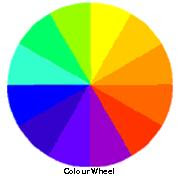Colour for Your Home and Your Life: Classic Colour Schemes
This is part three of our series of articles entitled "Colour for Your Home and Your Life with Wo-Built Inc."
Classic Colour SchemesLonya is the staff writer for Wo-Built Inc.
There are many colour schemes to choose from and below you will find a few combinations that Wo-Built would recommend. In selecting your particular colour scheme, these are a few of the basic combinations that work together and will help you to create the particular mood that would complement the design of your space.
1. Monochromatic Colour Scheme
The monochromatic colour scheme uses variations in lightness and saturation of a single colour. This scheme looks clean and elegant. Monochromatic colours go well together, producing a soothing effect. The monochromatic scheme is very easy on the eyes, especially with blue or green hues.
2. Analogous Colour Scheme
The analogous colour scheme uses colours that are adjacent to each other on the colour wheel. One colour is used as a dominant colour, while the others are used to enrich the scheme. The analogous scheme is similar to the monochromatic, but offers more nuances.
3. Complementary Colour Scheme
The complementary colour scheme consists of two colours that are opposite each other on the colour wheel. This scheme looks best when you place a warm colour against a cool colour. An example would be red versus green-blue. This scheme is basically high contrast.
4. Split Complementary Colour Scheme
The split complementary scheme is a variation of the standard complementary scheme. It uses one colour and the two colours adjacent to its complement. This provides a high contrast without the strong tension of the complementary scheme.
5. Triadic Colour Scheme
The triadic colour scheme uses three colours equally spaced around the colour wheel. This scheme is popular among artists because it offers strong visual contrast while retaining harmony and colour richness. The triadic scheme is not as contrasting as the complementary scheme, but looks more balanced and harmonious.
6. Tetradic (Double Complementary) Colour Scheme
The tetradic scheme is the most varied because it uses two complementary colour pairs. This scheme is hard to harmonize, if all four hues are used in equal amounts, the scheme may look unbalanced so you should choose a colour to be dominant or subdue the colours.
links:
Wobuilt Inc.: Kitchen Color Trends
Wobuilt Inc.: Paint Colour Trends 2008... Are you making the most of your investment?
Wobuilt Inc.: How many paint colours?!
Wobuilt Inc.: Colour for Your Home and Your Life with Wo-Built Inc. (Part 1)
Wobuilt Inc.: Colour for Your Home and Your Life: Intention Of Space (Part 2)
Wobuilt Inc.: Colour for Your Home and Your Life: Classic Colour Schemes (Part 3)
technorati tags:
91 posts tagged
10 posts tagged
39 posts tagged













No comments:
Post a Comment